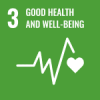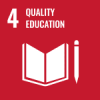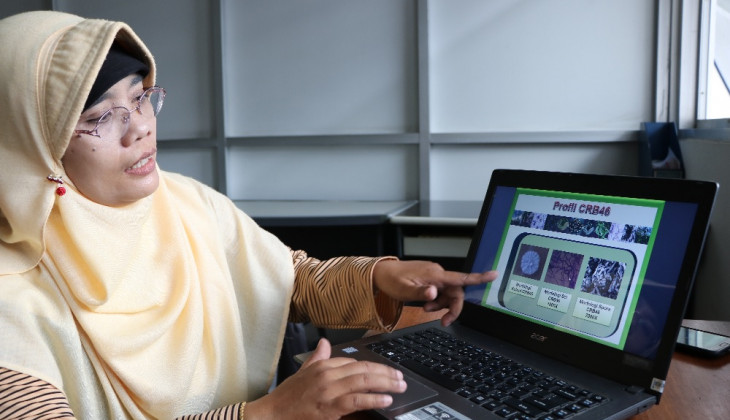Antibiotics are drugs that are widely used to treat diseases caused by bacterial infections. Even so, currently there is a lot of resistance of pathogenic bacteria to various kinds of antibiotics.
These conditions prompted Ambarwati, a doctoral student at the UGM Faculty of Biology, to explore antibiotic-producing bacteria, one such bacteria is the Streptomyces. This type of bacteria was chosen because it is able to produce the most antibiotics. With the intact genome sequencing method (WGS), she managed to find a new species of antibiotic-producing Streptomyces bacteria. The bacteria samples used came from the highlands of Cemoro Sewu, Magetan, East Java.
“The WGS sequence of the new species is currently in the process of submission to the National Center for Biotechnology Information (NCBI) and its name is proposed as Streptomyces cemorosewuensis sp. Nov,” she explained, Friday (14/2) in the dissemination of research results from the doctoral program at the UGM Faculty of Biology. Her doctoral research was promoted by Prof. Ir. Triwibowo Yuwono, Ph.D., with co-promotors, Prof. Dr. Subagus Wahyuono, MSc, Apt and Prof. Sukarti Moeljopawiro, Ph.D.
Ambarwati revealed that there is something interesting about this new species she discovered. These species have the potential to produce broad-spectrum bioactive compounds or antibiotics. That is, the species is not only able to inhibit gram-positive bacteria, but also gram-negative bacteria and even anti-candida (anti candida fungi).
Other findings suggest that this new bacterial species contains 53 groups of genes that produce bioactive compounds. This new Streptomyces produces 8 compounds that have been previously found in other Streptomyces with 100 percent similarities to the 6 compounds whose structures have been known. In addition, this new species also has the potential to produce 9 new compound classes.
“Interestingly, this new species also has the potential to produce malacidin compounds which have the ability to inhibit pathogenic gram-positive bacteria that have been resistant to antibiotics. Apart from that, it can also cure skin infections due to metilicin-resistant Staphylococcus aureus,” explained the lecturer at the Public Health Study Program, FIK Muhammadiyah University, Surakarta.
Research on bacteria was also carried out by Didik Wahyudi who studied Pseudomonas aeruginosa, an opportunistic pathogenic bacterium that is the main cause of nosocomial infections, such as pneumonia, urinary tract infections, and infections of various organs of the body. These bacteria have very unique properties, namely being able to form biofilms in body tissues which cause changes in character such as resistance to various antibiotics. However, the addition of tryptophan in the bacterial culture medium was able to inhibit the formation of this bacterial biofilm. Conversely, the addition of glucose and mannose actually increases the formation of bacterial biofilms. Meanwhile, the addition of a nitrogen source did not affect the formation of bacterial biofilms.
In the dissemination of the research results, Aprilia also explained the curl virus in melons. From the research, she was able to find molecular markers that can differentiate between cultivars of melons that are resistant and susceptible to Begomovirus, which causes leaf curl disease in melons. Meanwhile, from research on the level of resistance of local melon cultivars to Begomovirus, it is known that there are two local cultivars produced by the breeding of the UGM Faculty of Biology that are tolerant of Begomovirus.
Source: https://ugm.ac.id/id/berita/19031-mahasiswa-ugm-temukan-spesies-baru-bakteri-penghasil-antibiotik



